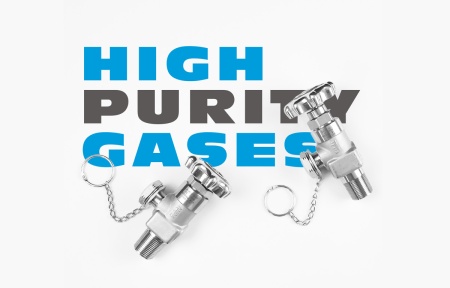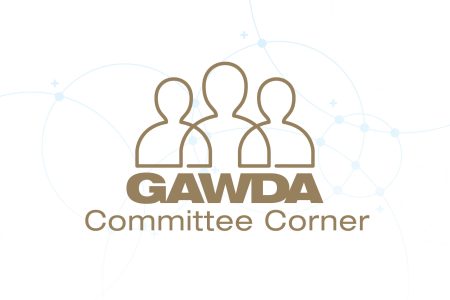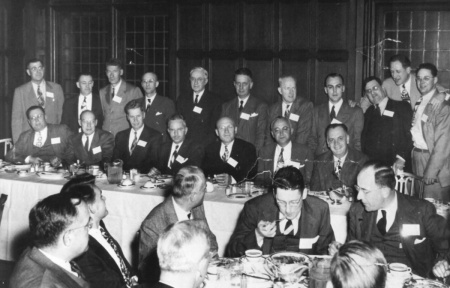With the global spread of the COVID-19 pandemic in the spring of 2020, the compressed gas industry has faced tremendous challenges and risk. Never before has it been so crucial for all members of the industry to work together to serve the needs of customers, while striving to keep employees, vendors, end users, and all others across our supply chains, safe.
To that end, we at the Compressed Gas Association (CGA) are taking ongoing action, coordinating with our members as well as government agencies in the U.S. and Canada, and sharing new resources to aid in our industry’s response to COVID-19. We highlight some of those actions and resources here, in the hopes that you will find them useful in your own company’s response to the pandemic.
CGA’s Online COVID-19 Toolkit Offers In-Depth, Rapidly Expanding Resource
On March 26, 2020, we launched an online industry toolkit to aid in the industry’s COVID-19 response (see https://bit.ly/CGACOVID-19Toolkit). Here, we provide news, resources, links, and other critical information related to COVID-19, to assist all members of the industrial, medical, and food gases industry in your response efforts during this pandemic.
This toolkit includes content focused on U.S. and Canadian government news and resources at the federal, state/province, and local levels, as well as CGA news and resources. We will continue updating and expanding the toolkit in the coming months, as critical information becomes available.
Recent updates include the following:
Tools to Monitor U.S. State & Local Government COVID-19 Response & Reopening
As all 50 states in the U.S. move to reopen to varying degrees, it can be challenging to keep track of all that is changing. The National Association of Manufacturers (NAM) provides an online interactive map, showing state-by-state COVID-19 resources gathered from its state partners and local governments.
In addition, MultiState Associates, a state and local government relations firm, is maintaining an online Dashboard that tracks in detail U.S. state and local government response to COVID-19, including reopening orders. The company also provides maps and other resources for tracking how states and localities are responding to the crisis.
To access these and other state and local response trackers, visit: https://bit.ly/COVID-19StateGovResponse.
Reopening Guidance and Resources
Although certain parts of your company’s operations may have remained open during government shelter orders during the spring of 2020, others were likely either conducted remotely or curtailed. CGA continues to share resources to aid in companies’ reopening.
On April 29, 2020, the U.S. Federal Emergency Management Agency (FEMA) published a new fact sheet, “Planning Considerations for Organizations in Reconstituting Operations During the COVID-19 Pandemic.” This FEMA publication provides factors to consider when planning for resumption of more normal operations. The U.S. Centers for Disease Control and Prevention (CDC) also recently provided guidance for cleaning and disinfecting public spaces, workplaces, businesses, schools, and homes. This guidance provides a general framework for cleaning and disinfection practices. To see these and other resources, visit: https://bit.ly/COVID-19USGov.
CGA Offers Materials to Help Determine Site Access for Employees & Visitors
CDC has issued guidance for companies to use when dealing with workers who may have been exposed to the COVID-19 virus. Based on this guidance, we developed a set of resources GAWDA members can use when establishing procedures for determining the suitability of employees to work after potential exposure to the Coronavirus, as well as site access for visitors.
These materials include:
- Model Flow Chart for Employee Ability to Work: you can modify this model flow chart or use as-is to show protocols for dealing with employees who may have been exposed to the COVID-19 virus.
- Return to Work Requirements: provides a model set of requirements for assessing the ability of employees to return to work after exposure to COVID-19.
- Visitor Site Access Questions: offers a model questionnaire you can modify or use as-is for potential visitors to company facilities.
- Visitor Access Sign: provides a model sign you can modify or use as-is to educate potential visitors to company facilities.
These resources may be accessed on our COVID-19 toolkit (see: https://bit.ly/COVID-19SiteAccess).
CGA Provides Multiple Standards for COVID-19 Response
As healthcare providers around the world continue working to assist patients affected by the Coronavirus Disease 2019 (COVID-19), medical gas containers can become externally contaminated due to their use in healthcare facilities. It is important that these cylinders are cleaned in a manner that removes contaminants, does not cause damage to the cylinder, valve, or gas product, and does not lead to a hazardous situation during the use of the container’s contents. It is the customer’s responsibility to return to the gas supplier medical gas containers that are free from contamination.
CGA P-83, Guidelines for Cleaning Externally Contaminated Medical Gas Containers, provides guidance on considerations required to avoid compromising medical gas containers during cleaning and disinfection procedures. In order to facilitate safe cleaning of medical gas containers, CGA is providing P-83 at no charge during the COVID-19 pandemic (all CGA Safety Alerts are also available for free).
To make CGA P-83 more readily available for all, we have published it directly to our public website, where it can be easily downloaded (see https://bit.ly/CGAP-83Info).
We also provide this related safety alert:
CGA SA-35, Safety Alert, Cleaning of Cylinders Returned from Healthcare Facilities During a Pandemic
Change of Service Guidelines
The following CGA publications provide guidance for gas suppliers working to transition cylinders into medical oxygen service during the COVID-19 pandemic:
- CGA C-10, Guideline to Prepare Cylinders and Tubes for Gas Service and Changes in Gas Service
- CGA M-18, Standard for the Change of Product and Change of Grade for High Pressure and Refrigerated Liquid Containers
- CGA SA-36, Safety Alert, Cylinder and Cryogenic Container Issue Related to Cylinder Conversion and Filling During the COVID-19 Crisis
Supply Systems
This Safety Alert provides interim measures that may be considered for use during the COVID-19 crisis, if there is a need to temporarily increase the capacity of existing medical oxygen supply systems. It also addresses measures that may be considered when installing temporary medical oxygen supply systems.
CGA SA-37, Safety Alert, Medical Oxygen Supply System Issues During the COVID-19 Crisis
We’ve Published New, Free Medical Oxygen Supply Chain Posters
In early April, we published two new, free medical oxygen supply chain posters: a cylinder poster and a wall connection poster. These posters, which are available for download from our COVID-19 industry toolkit, communicate critical steps that healthcare providers can take to support the medical oxygen supply chain during this time of crisis:
- Understand their medical gas supply system needs and capabilities
- Manage medical gas container inventory
- Clean their medical gas containers
The posters are designed so that suppliers can add your contact information to each poster, before sharing them with your healthcare customers. Each poster also includes a link to safety publication CGA P-83. To access these posters, visit: https://bit.ly/COVID-19CGAResources.
CGA Leads Industry Consortium Responding to Looming CO2 Shortage
Carbon dioxide (CO2) is critical for the operations of food and beverage manufacturers that provide essential goods and services to Americans. It is used in the processing, packaging, preservation, and shipping of many foods. In addition, CO2 in different forms is used in various aspects of the healthcare industry and is also an important component in many municipal water treatment systems.
In early April, an industry coalition led by the Compressed Gas Association and including representatives from multiple food and beverage groups, submitted a letter to U.S. Vice President Mike Pence expressing strong concern that the current COVID-19 pandemic creates a significant risk of a shortage in carbon dioxide. The letter argued that such a shortage would significantly impact access to essential food and beverage supplies as well as other essential sectors of the U.S. economy.
Signed by leaders from CGA, the North American Meat Institute, the National Pork Producers Council, the National Turkey Federation, the National Cattlemen’s Beef Association, the Beer Institute, the Brewers Association, and the Renewable Fuels Association, the coalition letter urged immediate federal action to put manufacturing plants that support CO2 production back into service, especially those sites that are capture ready, i.e., those that have the ability to capture, liquefy, and store usable CO2. (See the letter at: https://bit.ly/CO2ShortageLetter).
CGA continues to work closely with our industry partners and with representatives from the highest levels of the U.S. government to identify strategies to mitigate this risk.
CGA Continues Coordination with U.S. and Canadian Authorities on COVID-19 Response
On March 19, 2020, the U.S. Department of Homeland Security (DHS) Cybersecurity and Infrastructure Security Agency (CISA) first issued guidance on “Essential Critical Infrastructure Workers” during the response to the COVID-19 pandemic. DHS provided a list of “Essential Critical Infrastructure Workers…” to help state and local officials as they work to protect their communities, while ensuring continuity of functions critical to public health and safety, as well as economic and national security.”
In this guidance, DHS defined “Manufacturers, technicians, logistics and warehouse operators, and distributors of … medical gases” as “essential.” Other CGA member activities have also been identified as essential in the CISA guidance, such as food manufacturer employees and their supplier employees (including those employed in food ingredient production and processing facilities), workers supporting the chemical and industrial gas supply chains, and workers necessary for the manufacturing of metals (including steel and aluminum), industrial minerals, semiconductors, materials and products needed for medical supply chains, and for supply chains associated with transportation, energy, communications, information technology, food and agriculture, and chemical manufacturing.
On April 2, Public Safety Canada issued its “Guidance on Essential Services and Functions in Canada during the COVID-19 Pandemic,” which helped align the list of essential workers across the provinces and territories. CGA member activities were included under several categories. To ensure the continued functioning of the two nations’ integrated economies, this document was aligned and consistent with the guidance from U.S. DHS CISA.
Throughout the spring, CGA maintained that any U.S. state or local quarantine or shelter-in-place declarations should rely on the CISA guidance and include medical gas workers and other workers identified as “essential” to the response to COVID-19. On March 25, CGA was a signatory to a broad industry letter sent to U.S. government officials, supporting a consistent definition of “critical infrastructure” across all jurisdictions during the COVID-19 pandemic. 111 industry groups signed on to this letter, representing nearly the entire U.S. economy. The letter was delivered to the White House, DHS CISA, and governors and mayors across the country.
In addition, CGA worked with the U.S. Department of Transportation Pipeline and Hazardous Materials Safety Administration to secure a Special Permit and Enforcement Discretion allowing the filling of cylinders that have exceeded their periodic requalification test date, to help ensure a sufficient supply of medical oxygen and other needed medical gases cylinders. Following a request from CGA, Transport Canada issued a temporary certificate similarly allowing the filling of cylinders that have exceeded their test and inspection date.









